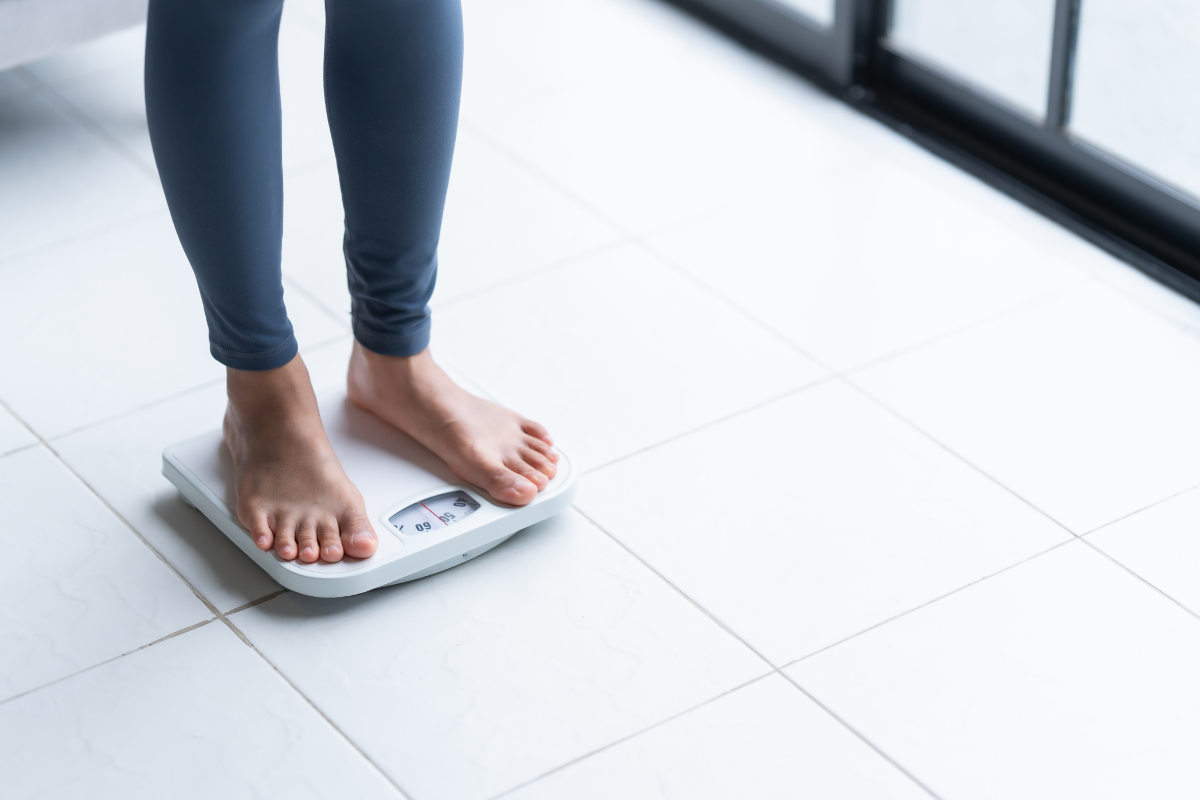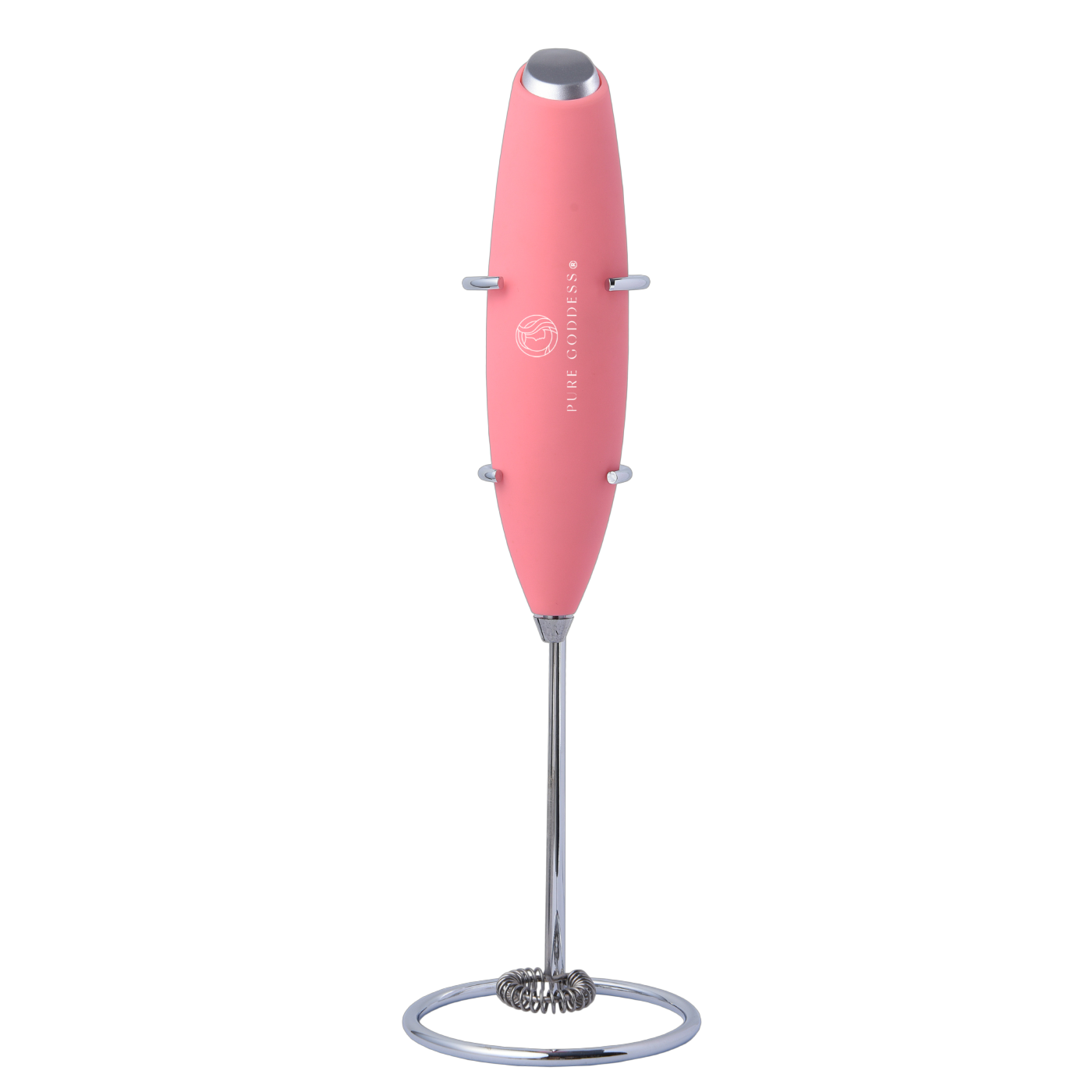Article: How to Lose Weight in Perimenopause: Proven Strategies for Lasting Results

How to Lose Weight in Perimenopause: Proven Strategies for Lasting Results
Perimenopause is the transitional phase before menopause, typically beginning several years before a woman's final menstrual period. It is marked by fluctuating hormone levels, especially estrogen and progesterone, which lead to changes in menstrual cycles, physical symptoms like hot flashes, night sweats, and weight gain, as well as emotional effects such as mood swings and brain fog. This phase is characterised by irregular periods - cycles may be longer, shorter, or missed altogether and symptoms can vary widely among women.
Understanding perimenopause is vital because it signals the body’s shift from reproductive years to menopause and can last several years. Awareness of this phase helps in managing symptoms effectively through lifestyle adjustments, medical treatments, and self-care, supporting women to navigate this natural hormonal transition with greater clarity and confidence.
This transitional phase before menopause, brings significant hormonal fluctuations that often cause weight gain and metabolic changes, especially around the belly.
For many midlife women, the journey through perimenopause presents challenges that make weight management feel daunting, even impossible at times. However, with the right knowledge and sustainable strategies, it’s entirely possible to regain control, shed excess weight, and feel vibrant in your changing body.
Understanding the symptoms of perimenopause is essential, as it can help you identify the specific changes your body is experiencing and tailor weight loss strategies accordingly.
Symptoms vary widely among women and may include irregular periods, hot flashes, night sweats, mood swings, sleep disturbances, fatigue, brain fog, and changes in appetite or digestion. Recognising these symptoms early through education and resources can really help you to understand these changes.
Refer to our FREE online resource Perimenopause Symptom Checker
Our symptom checker is packed with relevant information - We know every woman’s journey is unique, so our FREE digital download will help you decide if your symptoms are perimenopause and give you the knowledge and power to take action and live well through this transitional phase of life.
This will help empower you to take proactive steps and seek appropriate support. Symptom tracking also fosters clearer communication with healthcare providers, allowing for personalised guidance and interventions.
Understanding Weight Gain in Perimenopause: What’s Going On?
During perimenopause, fluctuating estrogen and progesterone disrupt several key systems affecting metabolism and fat distribution. One of the main changes is a tendency for fat to redistribute from hips and thighs to the abdomen, increasing visceral fat around internal organs - a condition dubbed “perimenopause belly.” This fat type is metabolically active and increases risks for insulin resistance, cardiovascular disease, and type 2 diabetes.
Muscle mass naturally declines with age, a process accelerated by hormonal changes. Muscle is a metabolic powerhouse; less muscle means lower resting calorie burn. Simultaneously, the body’s insulin sensitivity may decrease, leading to blood sugar spikes and fat storage.
Stress levels often rise during perimenopause due to physical symptoms and life pressures, raising cortisol levels, a hormone that promotes abdominal fat accumulation. Sleep disturbances and mood shifts further exacerbate appetite dysregulation and metabolic issues, creating a vicious cycle of weight gain and stress.
Genetics and lifestyle factors such as diet quality, physical activity, and sleep quality interplay with these physiological changes, determining individual weight gain patterns.
Nutrition: The Cornerstone of Weight Loss in Perimenopause
Prioritise Protein Intake
Protein is crucial for preserving lean muscle mass during perimenopause and supporting metabolic rate. Aim for 20-30 grams of high-quality protein per meal from sources like lean meat, fish, eggs, legumes, and plant-based alternatives. Protein also enhances satiety and stabilises blood sugar, helping to curb overeating and cravings.
Focus on Fiber-Rich Whole Foods
Dietary fiber from vegetables, fruits, whole grains (such as oats, barley, quinoa), nuts, and seeds supports digestive health, improves gut microbiome diversity, balances blood sugar, and promotes fullness. A fiber-rich diet aids in eliminating hormone metabolites efficiently, assisting hormonal balance.
Incorporate Healthy Fats
Omega-3 fatty acids from fatty fish such as salmon and mackerel, as well as plant sources like flaxseeds and walnuts, along with monounsaturated fats found in olive oil and avocado, play a vital role in reducing inflammation and promoting satiety. These healthy fats help regulate appetite, making it easier to avoid overeating, and they support hormone health by easing the burdens of hormonal fluctuations that occur during perimenopause. Beyond appetite control, omega-3s have been shown to support heart health by lowering triglycerides and blood pressure, improve cognitive function and mood stability, and reduce joint pain and stiffness, which are common complaints during menopause. Their anti-inflammatory effects may also help alleviate menopausal symptoms such as hot flashes and night sweats. Incorporating omega-3 rich foods as part of a balanced diet can enhance overall wellbeing, support metabolic health, and contribute to sustainable weight management during the hormonal transitions of perimenopause.
Limit Processed Foods and Sugars
Highly processed snacks, sugary drinks, and refined carbohydrates spike insulin and favor fat storage, especially in the belly area. These foods are quickly digested, causing rapid blood sugar spikes that trigger the pancreas to release large amounts of insulin—the hormone responsible for driving glucose into cells for energy or storage. When insulin levels remain elevated frequently, the body is more likely to store excess calories as fat, particularly visceral fat around the abdomen, which is linked to increased inflammation and metabolic risks. During perimenopause, declining estrogen reduces insulin sensitivity, meaning your cells don’t respond to insulin as effectively, and your pancreas compensates by producing even more insulin. This cycle worsens fat accumulation and energy crashes. Additionally, high insulin interacts with cortisol, the stress hormone, which rises during perimenopause, further promoting abdominal fat storage and cravings for sugary, refined foods. Reducing intake of these processed foods helps balance insulin and cortisol levels, stabilises blood sugar, reduces inflammation, and supports more effective fat metabolism-crucial for weight management during this life stage
Consider Time-Restricted Eating or Intermittent Fasting
Emerging research suggests that limiting eating windows or intermittent fasting can improve insulin sensitivity and promote fat loss in perimenopausal women. This approach works by allowing the body to switch from glucose burning to fat burning during fasting periods, improving metabolic flexibility. Benefits include better regulation of blood sugar, reduction in abdominal fat, decreased inflammation, improved energy levels, enhanced mental clarity, and even potential relief from menopausal symptoms such as hot flashes and night sweats. However, because perimenopausal women experience hormonal fluctuations and may be more sensitive to stress, it is important to approach intermittent fasting cautiously and personalise it to your needs. Those with a history of disordered eating, certain medical conditions, or sleep difficulties should consult a healthcare professional before starting. When done thoughtfully, combining intermittent fasting with nutrient-dense meals during eating windows can support sustainable, healthy weight loss and overall wellbeing in perimenopause.
Exercise: Move Smarter, Not Harder
Strength Training Is Essential
Preserving and building muscle mass improves resting metabolic rate and body composition. Incorporate 2-4 weekly sessions using weights, resistance bands, bodyweight exercises, or Pilates. Strength training also supports bone density, which can decline during perimenopause.
Include Moderate Cardiovascular Exercise
Activities like brisk walking, swimming, and cycling promote fat burning and cardiovascular health without overstressing your body or increasing cortisol excessively. Aim for at least 150 minutes of moderate aerobic activity per week.
Mind-Body Movement for Stress Management
Practices such as yoga, tai chi, and Pilates help calm the nervous system, lower cortisol, improve flexibility and balance, and enhance sleep quality, all of which contribute to better weight management.
Avoid Overtraining and Excessive Endurance Exercise
High-intensity or prolonged endurance workouts can increase stress hormones, potentially sabotaging weight loss efforts. Listen to your body and prioritise recovery.
Stress and Sleep: Non-Negotiable for Weight Management
Chronic stress and Poor sleep: These are major drivers of weight gain in perimenopause. Elevated cortisol promotes 'belly fat' and disrupts appetite-regulating hormones leptin and ghrelin, increasing cravings and overeating.
Stress Reduction Practices: Incorporate mindfulness meditation, deep breathing exercises, journaling, time in nature, or creative hobbies regularly to lower cortisol and support emotional wellbeing.
Optimise Sleep Hygiene: Aim for 7-9 hours of restorative sleep per night by maintaining a consistent bedtime routine, limiting screen exposure before bed, keeping your bedroom cool and dark, and considering magnesium supplementation if suitable.
Targeted Supplement Support
Supplements can complement diet and lifestyle changes to ease hormonal fluctuations and promote metabolism:
-
Protein Powders: Help meet protein needs and support muscle building.
-
Probiotics: Improve gut microbiome health, crucial for hormone metabolism and inflammation control.
-
Metabolism & Energy Superblend: Our Pure Goddess Superblend is a daily powdered blend designed to promote weight loss, enhance calorie burning, and support healthy blood sugar levels. With clinically backed ingredients, it helps reduce appetite, curb cravings, and maintain healthy thyroid and metabolic function.
-
Adaptogens: Ashwagandha, rhodiola, and maca can modulate stress hormones and support energy.
-
B Vitamins: Support metabolism and cognitive function.
-
Blood Sugar Regulators: Chromium, berberine, and inositol help stabilise glucose and insulin levels.
-
Menopause Shake: Our Pure Goddess Shake is a thoughtful blend of plant protein, fiber, adaptogens, collagen, essential vitamins and minerals. They work together to help maintain energy, support bone health, ease menopause symptoms, help you lose weight and promote overall wellbeing.
Always consult a healthcare professional before starting supplements, especially if you have existing health conditions or take medications.
Support Through Resources
If you need help to get started on your weight-loss journey you can transform your health, metabolism, and energy levels with the Pure Goddess 28-Day Metabolic Reset. This is your ultimate guide to sustainable weight loss, increased vitality, and balanced hormones. Specifically designed for individuals who struggle with losing weight, unhealthy food cravings, fatigue, energy crashes, and hormonal imbalances, this book offers a holistic solution to help you feel your best self again.
Cultivate a Compassionate Mindset
Weight loss during perimenopause is a slow, steady journey. The body is shifting, and strategies effective earlier in life may require adjustment. Cultivating self-compassion and focusing on wellbeing beyond the scales, like improved energy, mood, and strength - can sustain motivation and mental health.
Surround yourself with supportive communities or content that embraces aging and wellness, reinforcing positive changes and resilience.
Practical Tips to Get Started Today
-
Track your symptoms using tools like the
-
to better understand your body.
-
Include protein in every meal to preserve muscle.
-
Move daily, including strength and moderate cardio.
-
Prioritise sleep with a calming bedtime routine.
-
Fill your plate with colourful whole foods and healthy fats: Pure Goddess 28-Day Metabolic Reset
-
Manage stress with meditation, journaling, or gentle movement.
-
Consult professionals for personalised advice.
Final Thoughts
Navigating weight loss in perimenopause requires comprehensive understanding and an integrated approach. Recognising your symptoms guides tailored strategies across nutrition, movement, sleep, and self-care. By working with your body’s rhythms and embracing supportive tools like symptom trackers, you can reclaim vitality, health, and confidence during this transformative life stage.







Leave a comment
This site is protected by hCaptcha and the hCaptcha Privacy Policy and Terms of Service apply.